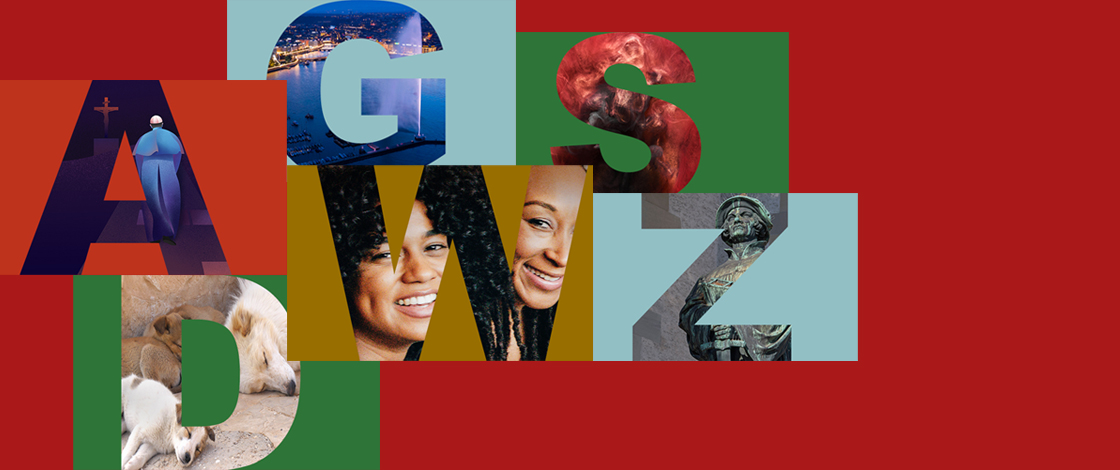R–Z, Reason–Zwingli
The A–Z of the Swiss Reformation
Inspiring and fascinating facts from ADRIAN to ZWINGLI

Reason.
While Luther affirmed and judged, Calvin reasoned and argued.

Responsibility.
For Reformed Christians, the twin sister of liberty.
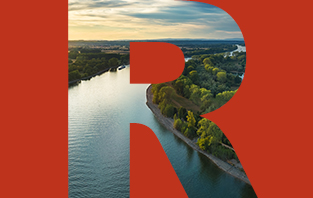
Rhine.
“Do not fight the Word of God, for in truth it will follow its path just as surely as the Rhine follows its course.” Zwingli
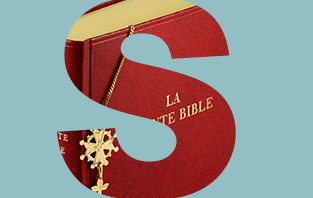
Sacraments.
Calvin wrote that the sacraments are like crutches that help the afflicted to walk; for Zwingli, they are more like the cross of the Huguenots, which is worn as an external symbol of one’s faith.

Sex.
700 prostitutes were registered in the town of Constance during the 1414 Council of Constance, where Jean Hus was burned as a heretic. A century later, Zwingli confessed that he was unable to control his sexual inclinations and that he occasionally frequented brothels. He did however firmly reject the rumours spread by his enemies that he had dishonoured a young lady from a highly respected Zurich family. Anna Reinhart took care of him while he suffered from the plague, and the two wed once he abolished celibacy for the priesthood. Like Luther, Zwingli did not view celibacy as having a biblical basis.
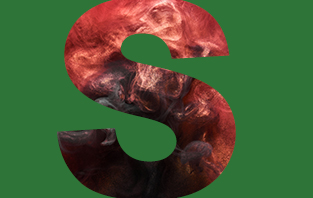
Sin.
“No sin can lose a man his salvation, apart from disbelief.” Luther
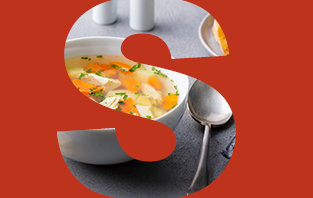
Soup.
Swiss soldiers were used to bravely fighting foreign wars for money, but were less disciplined when the conflict was carried out in their own country. When in 1528, their Catholic and Reformed leaders attempted to motivate their troops to take up arms against and for the Reformation, respectively, they decided instead to share in a meal of milk soup. “The milk soup of Kappel” is one of the Swiss legends involving peaceful co-existence among Catholic and Protestant cantons.

Statistics.
• Between the 15th and 17th centuries, one in a hundred Swiss was accused of witchcraft.
• In Zurich, the Reformation led to doing away with 30 public holidays for the sake of additional workdays.
• Before Calvin arrived in Geneva, 1000 people lived from income related to religious activities there; by the time of his death, only 20 still did.
• After the revocation of the Edict of Nantes in France in 1685, 150 000 Protestant refugees headed for Switzerland, either settling there or moving further onward. Switzerland had only a million inhabitants at the time.
• In Zurich, the Reformation led to doing away with 30 public holidays for the sake of additional workdays.
• Before Calvin arrived in Geneva, 1000 people lived from income related to religious activities there; by the time of his death, only 20 still did.
• After the revocation of the Edict of Nantes in France in 1685, 150 000 Protestant refugees headed for Switzerland, either settling there or moving further onward. Switzerland had only a million inhabitants at the time.
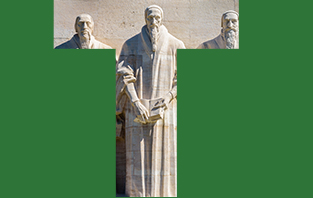
Towns.
In Switzerland, the Reformation was an urban phenomenon. In rural areas, people were either more conservative or more revolutionary. In the 16th century, the industrial town of Zurich had less need of external revenue than did the Alpine cantons. The Reformation, which fought against mercenary service, was therefore not particularly successful in Central Switzerland. In the countryside, the Reformation, however, also fomented ideas of uprising. The Gospel led both German peasants and Anabaptists in Zurich to take on programmes of radicalism, which were vigorously contested by Luther and Zwingli, respectively. They feared that a radical form of the Reformation risked be opposed by an alliance of the ruling class and emerging middle class.

Women.
Wibrandis Rosenblatt (1504–1564) was married four times, and the last three of her husbands were none other than the celebrated reformers Oecolampadius, Capiton and Bucer. The abandonment of clerical celibacy changed ideas about matrimony and afforded women a more active role within the new church. The great reformers all praised the assistance provided by their wives in the course of their ministry. Even if gender discrimination did not disappear with the introduction of the priesthood of all believers, the position of women did nevertheless progress in the Protestant churches, culminating in the 20th century with the ordination of women pastors. Committed to social support, the Protestant Women’s Federation in Switzerland has played a role since the beginning of the 20th century in advocating for equality in church practice. As the Apostle Paul proclaimed “There is neither Jew nor Gentile; neither slave nor free; neither male nor female; for you are all one in Christ Jesus”.
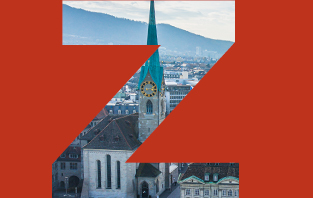
Zurich.
Switzerland’s largest city was the cradle of the Re-
formation. In 1523, the Zurich Town Council adopted the programme established by the Grossmünster priest, Ulrich Zwingli. His political legitimacy as supported by a collective body lent him a different significance than that of the Lutheran Reformation which was endorsed by individual princes. Today, a third of the city’s inhabitants are declared Protestants, three times as many as in Geneva, thanks in part to the close cooperation between the church and canton. Two former Federal Councillors from Zurich have been sons of pastors. They embody the two opposing wings of Protestantism: Christophe Blocher represents its aspiration towards radical independence, Moritz Leuenberger its calling to solidarity. The cosmopolitan city gave birth to the Dadaist Movement in 1916: Some would view this as the re-emergence of an underground iconoclasm to topple idols that were established four centuries earlier.
formation. In 1523, the Zurich Town Council adopted the programme established by the Grossmünster priest, Ulrich Zwingli. His political legitimacy as supported by a collective body lent him a different significance than that of the Lutheran Reformation which was endorsed by individual princes. Today, a third of the city’s inhabitants are declared Protestants, three times as many as in Geneva, thanks in part to the close cooperation between the church and canton. Two former Federal Councillors from Zurich have been sons of pastors. They embody the two opposing wings of Protestantism: Christophe Blocher represents its aspiration towards radical independence, Moritz Leuenberger its calling to solidarity. The cosmopolitan city gave birth to the Dadaist Movement in 1916: Some would view this as the re-emergence of an underground iconoclasm to topple idols that were established four centuries earlier.
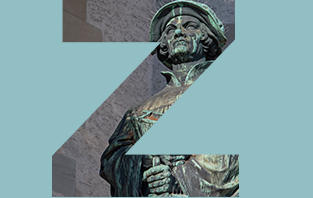
Zwingli.
Outline for a biographical TV series: Episode 1. Death in combat at Kappel, body torn apart, cremation with a pig, his heart recovered and carried back to his widow, Anna.
Episode 2. Birth in the mountains of Toggenburg, student years in Vienna, meeting with Erasmus and processions in Glarus, where as a Catholic priest, he paraded the host through the town to make it rain.
Episode 3. War: Marignano 1515, the young chaplain assists the mercenaries, is disgusted by their behaviour, observes the devastating effects of the violence on the spirit of the young Swiss men.
Episode 4. Einsiedeln: Love, a clandestine affair with an aristocratic woman, his move to Zurich, then contracting the plague while caring for the sick.
Episode 5. Recovery, fell in love with his nurse, his first disobedience in matters of dogma, breaking the fast with a meal of sausages.
Episode 6. His deep friendship with Felix Manz, their intellectual (and physical) fight over the Reformation, the destruction of statues and images, the break between the two friends and the execution of the Anabaptist Felix by drowning under the consenting eyes of Zwingli.
Episode 7. Meeting with Luther at Marburg, the German prophet and the educated peasant, the Middle Ages against Humanism, stormy debates, discord. Luther is pleased to hear of the death of Zwingli, or indeed loses sleep over it.
Episode 2. Birth in the mountains of Toggenburg, student years in Vienna, meeting with Erasmus and processions in Glarus, where as a Catholic priest, he paraded the host through the town to make it rain.
Episode 3. War: Marignano 1515, the young chaplain assists the mercenaries, is disgusted by their behaviour, observes the devastating effects of the violence on the spirit of the young Swiss men.
Episode 4. Einsiedeln: Love, a clandestine affair with an aristocratic woman, his move to Zurich, then contracting the plague while caring for the sick.
Episode 5. Recovery, fell in love with his nurse, his first disobedience in matters of dogma, breaking the fast with a meal of sausages.
Episode 6. His deep friendship with Felix Manz, their intellectual (and physical) fight over the Reformation, the destruction of statues and images, the break between the two friends and the execution of the Anabaptist Felix by drowning under the consenting eyes of Zwingli.
Episode 7. Meeting with Luther at Marburg, the German prophet and the educated peasant, the Middle Ages against Humanism, stormy debates, discord. Luther is pleased to hear of the death of Zwingli, or indeed loses sleep over it.
